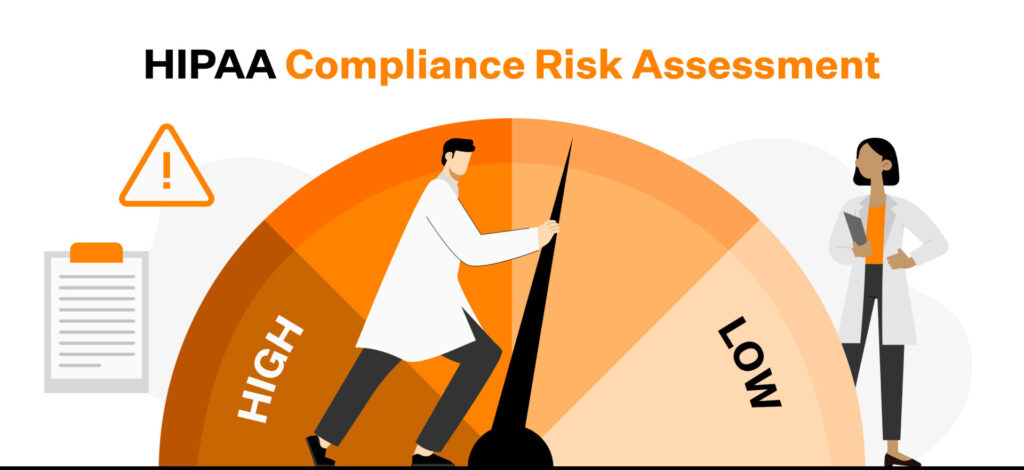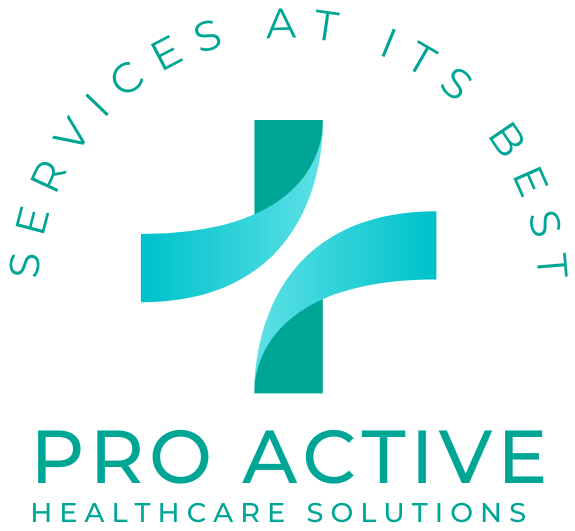
HIPAA Risk Assessment: Ensuring Compliance and Security
The Health Insurance Portability and Accountability Act, or HIPAA, is an important piece of legislation that guarantees the security of private patient data. Healthcare institutions must conduct a thorough HIPAA risk assessment in order to detect any weaknesses and protect patient data. That is why, at PHCSS we emphasize on conducting HIPAA risk assessment to make sure that we can know about our weaknesses( if any) and can protect our patient’s data as well. In this article, we will discuss what HIPAA security risk assessment is and why it should be implemented in healthcare sectors.
What is HIPAA security risk assessment?
Healthcare organizations can examine potential risks and vulnerabilities to the confidentiality, integrity, and availability of electronic protected health information (ePHI) by conducting a systematic procedure known as a HIPAA security risk assessment. It assists in locating non-compliant sites and creating efficient risk mitigation plans.
Tools for HIPAA security risk assessment
HIPAA security risk assessments can be facilitated by a variety of methods, from software programs to all-inclusive frameworks. Some commonly used tools include:
1. HIPAA compliance software: This category of software solutions is dedicated to helping healthcare businesses with the assessment, implementation, and upkeep of HIPAA compliance.
2. Security risk assessment templates: Ready-made templates offer an organized framework for performing risk analyses, guaranteeing comprehensive consideration of all relevant factors.
3. Risk assessment questionnaires: Adaptable questionnaires facilitate the collection of data from interested parties and the evaluation of compliance levels in a range of areas.
Scope of HIPAA Security Risk Assessment
All aspects of an organization’s activities that include managing electronic protected health information (ePHI), as defined by the Health Insurance Portability and Accountability Act (HIPAA), are included in the scope of a HIPAA security risk assessment. This consists of, but is not restricted to:
- Information systems: Evaluating the security of any system that stores, processes, or transmits electronic health information (ePHI), such as databases, networks, electronic health records (EHRs), and communication platforms.
- Data flows: Charting the organization-wide movement of ePHI to pinpoint all points of contact, such as data entry sites, storage facilities, transmission routes, and disposal techniques.
- Physical security: Assessing the effectiveness of physical security measures, such as surveillance systems, access restrictions, and defenses against environmental threats, theft, and illegal entry, in places where electronic patient health information is stored.
- Administrative safeguards:Administrative safeguards include reviewing administrative practices, rules, and procedures pertaining to the usage, maintenance, and access of ePHI. These include protocols for incident response, staff training, and security awareness initiatives.
- Technical safeguards: Evaluating the technical measures, such as encryption, audit logs, access restrictions, authentication systems, and data backup systems, that have been put in place to protect electronic personally identifiable information.
- Third-party relationships: Reviewing contractual agreements and compliance evaluations, as well as the security posture of third-party vendors, business associates, and service providers who handle or have access to ePHI on behalf of the company.
- Compliance requirements: Guaranteeing adherence to applicable regulatory standards, corporate policies, industry best practices, and the requirements of the HIPAA Security Rule.
- Risk analysis: Risk analysis is the process of identifying potential threats and weaknesses to the availability, confidentiality, and integrity of electronic patient health information (ePHI) and evaluating the possibility and impact of these risks.
- Risk mitigation strategies: Creating and putting into practice techniques to reduce the possibility and effect of security incidents, such as controls, safeguards, and backup plans, in order to address recognized risks.
- Continuous monitoring and review: To guarantee continuous adherence to HIPAA regulations and the changing nature of security threats, procedures for continuous monitoring, review, and reevaluation of security policies and controls must be established.
Elements included in HIPAA security risk assessment
Key components of an extensive HIPAA security risk evaluation usually consist of the following:
- Identification of ePHI: Charting the organization’s ePHI flow to pinpoint all the systems and procedures involved.
- Threat analysis: Threat analysis is the process of identifying possible risks and weak points, such as illegal access, data breaches, and natural catastrophes, that could jeopardize the security of electronic patient health information.
- Risk evaluation: Risk evaluation is the process of determining how likely and significant a risk is in order to properly prioritize mitigation activities.
- Control assessment: Examining current security protocols and controls to ascertain how well they mitigate risks that have been discovered.
- Documentation: Recording the results of the evaluation, including risk assessments, plans for risk mitigation, and continuing surveillance schedules.
What are HIPAA implementation specifications?
The Health Insurance Portability and Security Rule’s particular criteria for protecting electronic health information are referred to as HIPAA implementation specifications. Healthcare companies must adopt administrative, physical, and technical measures in accordance with these requirements to achieve compliance.
- Ensuring HIPAA security risk assessment compliance: Healthcare businesses need to give HIPAA security risk assessment top priority if they want to protect patient data and adhere to HIPAA requirements. Organizations can improve visibility and guarantee compliance with regulatory standards by including pertinent phrases like “HIPAA security risk assessment” into their compliance strategy.
- Security risk assessment tool: To expedite the assessment process and successfully manage risks, healthcare companies must use a strong security risk assessment tool. By automating data collection, analysis, and reporting, these technologies help companies carry out comprehensive assessments quickly and effectively.
Conclusion
In conclusion, conducting a HIPAA security risk assessment is important for healthcare organizations to identify and mitigate potential risks to patient data. So, at PHCSS, by using the right HIPAA security risk assessment tools and methodologies, we ensure compliance with HIPAA regulations and uphold the confidentiality, integrity, and availability of ePHI.






